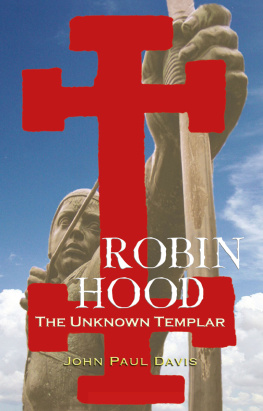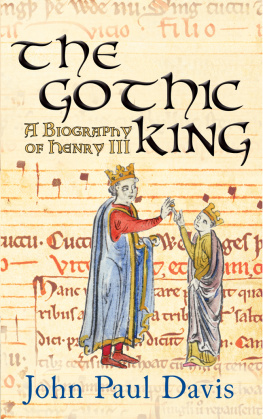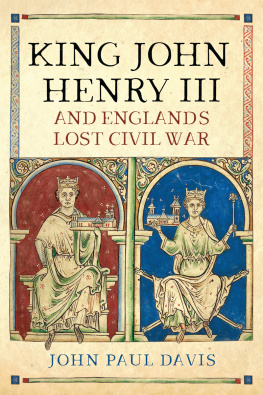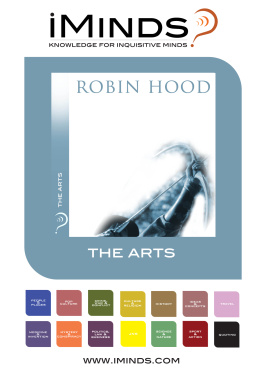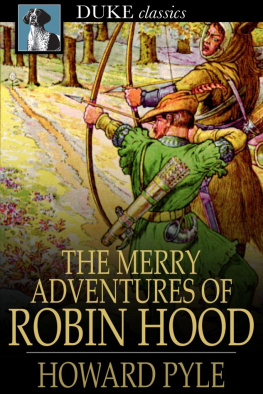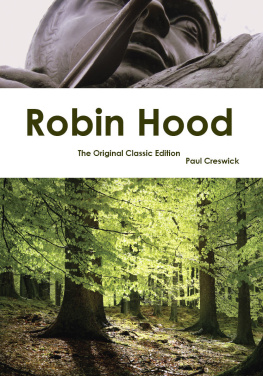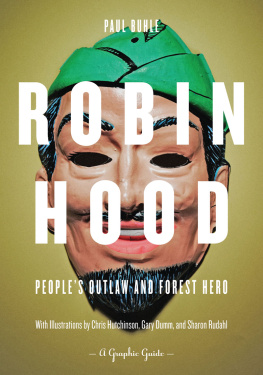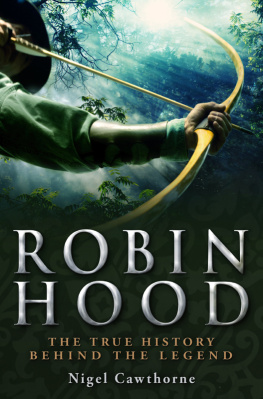
P RAISE FOR R OBIN H OOD THE U NKNOWN T EMPLAR
Prepare for the most fascinating read you will get in ages. Birmingham Post
The authors thought-provoking findings have uncovered some persuasive and plausible evidence that ensure the suggestions cannot be easily dismissed. Bob White, Chairman of the World Wide Robin Hood Society
Offering new insight to the man who may have been behind the legend, and gives much to intrigue readers a fascinating study of the legend of Robin Hood and who the man truly was. The Midwest Book Review
Recommended to anyone interested in early English literature and the genesis of the Robin Hood legends. Medieval History Journal
A unique take on who this Robin fella really was Nottingham Evening Post
R OBIN H OOD
T HE U NKNOWN T EMPLAR
Robin Hood, the legendary outlaw of Sherwood Forest, is a figure who has attracted yet baffled historians for hundreds of years. With the first references to him occurring in early ballads and chronicles, it has long been assumed that he and his Merry Men belong squarely in the realm of the folk tale. John Paul Davis, while undertaking research on the Knights Templar, has uncovered persuasive evidence on this popular medieval hero suggesting that he was, in fact, a real person with close ties to the religious military order. Adhering closely to historical sources, the author discusses the origins of the legend and traditional portrayals of the charismatic, freedom-loving outlaw and offers startling new insights into the character on whom he is based, who probably lived a hundred years or so later than the Robin of legend, whose exploits are generally dated to the reign of Richard the Lionheart. Robin Hood: The Unknown Templar will be of keen interest to anyone who has been intrigued by the myth and will make fascinating reading for those with their own theories of Robins true identity.
JOHN PAUL DAVIS is a historian who has worked on the Robin Hood Project at the University of Rochester, New York. Robin Hood: The Unknown Templar was his first book, and he has subesequently written many title, both ficiton and non-fiction, including Pity for the Guy: A Biography of Guy Fawkes and The Gothic King: A Biography of Richard III for Peter Owen.
A CKNOWLEDGEMENTS
When researching the ballads, I relied heavily on the collection compiled by Francis Child and to a lesser extent the earlier work by Joseph Ritson. Together, their superb collections provide some of the most important sources for this book. In addition, Thomas Ohlgrens Medieval Outlaws and Robin Hood and Other Outlaw Tales, edited by Ohlgren and Stephen Knight, provide an excellent guide to the ballads. When considering the earliest sources I am particularly indebted to the late D.E.R. Watt for his fantastic translation of Scotichronicon, Archibald Constable for his Historia Majoris Britanniae and many other authors now deceased for their useful translations of the Latin chronicles. Of the more modern sources, I would particularly like to acknowledge the work of Evelyn Lord and Malcolm Barber for their excellent books on the Knights Templar and also Karen Ralls, whose encyclopaedia has made available a wealth of historical information, some of which is not easy for the average historian to gain access to. While I am grateful to the authors of every book mentioned in the bibliography, the research and conclusions are my own.
When visiting various locations, such as those mentioned in the ballads, I have been fortunate to come across many helpful people who have gladly offered me information and support. In connection with these visits I am grateful to the local historians and clergy at the Church of St Mary Magdalene in Campsall, Yorkshire, for sharing their insights and making information available so readily. Similarly, at the Church of St Michaels and All Angels in Hathersage, Derbyshire, I would like to thank the clergy for making their local history available and for sharing their knowledge of Little Johns grave. I should mention many helpful people associated with a number of locations that I have visited across the country that are connected with the Robin Hood legend, Simon de Montforts rebellion and the Knights Templar. For their insights and, in some cases, permission to take photographs, I am indebted. In addition, I would like to thank the various librarians and institutions, including the Robin Hood Project, for answering numerous queries over the course of my research.
I extend my gratitude to all at Peter Owen Publishers and offer my heartfelt thanks to my copy-editor, James Ryan, for the sterling job he did in editing the book. My sincerest thanks go to Peter Owen himself for his enthusiasm and for agreeing to contract the book in its early stages.
On a personal note, I would like to thank my family and friends for their continuous support, particularly my brother and uncle, whose enthusiasm for the book has been strong throughout. Most importantly, I would like to thank my parents, whose encouragement and unfailing support has been invaluable in particular my dad, Mike, whose excellent work on the images and constructive feedback has helped make the book what it is. For accompanying me on each of my journeys to take photographs and for contributing many of his own, I am truly grateful.
C ONTENTS
I LLUSTRATIONS
F OREWORD
Almost everyone believes they are familiar with the stories of Robin Hood. Celebrated throughout the world as a famous Saxon nobleman who roamed the forests of northern England with his band of Merry Men, robbing from the rich to give to the poor, living on the kings deer in defiance of his being outlawed by the tyrannical Prince John for displaying loyalty to the true king, he is held by many as a man of noble intention and a yearned-for ideal set against oppressive and unjust authority. Sentimentally this is a fair assessment of one of the greatest heroes of English legend. For over six centuries people have enjoyed the tales of this good outlaw, and even in the twenty-first century his stories are continuing to evolve. Affection for his courageous and upright character, demonstrated in every ballad ever told of Robin Hood, remains as great now as it ever has been.
Although he is commonly viewed as a man who possessed integrity and generosity out of keeping with his time, history has been somewhat less revealing of his true identity. Over the centuries what began as a collection of ballads and rhymes about a group of outlaws in the forests of England has developed into something far greater. Years of retelling the stories have led to their being distorted, as traces of history have become merged with creations of the late Middle Ages and the modern era. The past century in particular has seen a noticeable change in the way Robin Hood appears to the world. Although his story lacks consistency, repetition and wide-scale exposure through tele vision and other media have developed enormous awareness and interest. He has become a highly marketable and familiar cult figure, even though the character that is presented to the children and adults of the modern day would have seemed completely out of place to those in the Middle Ages.
The main aspects of the story are known to almost everyone. As it usually begins, the famous nobleman Sir Robert of Locksley, often referred to as the Earl of Huntingdon, returns home from fighting alongside Richard the Lionheart in the Crusades to find that his lands have been confiscated. As a Saxon of noble birth, Locksley finds himself in opposition to the kings brother, Prince John, who is seeking to establish his position as ruler in Richards absence. The corrupt rule of the Norman usurper gives rise to an epic feud between Robins Saxon rebels and the prince, supported by Sir Guy of Gisborne and the Sheriff of Nottingham.
Next page
